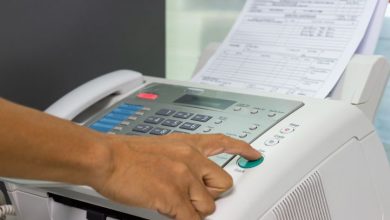11 LMS Training Hacks for Businesses: Boost Your Team’s Skills and Productivity

The rise of technology has brought about transformations in workplace learning and development.
One notable technological advancement is the introduction of learning management systems (LMS), which provide businesses with a comprehensive solution for training their staff.
This blog will delve into 11 strategies for optimizing LMS training to enhance your team’s skills and productivity. By incorporating these techniques, you can maximize the advantages offered by LMS platforms.
Let’s get started!
1. Customize Training Programs to Suit Your Requirements
Each business has its training needs, making it essential to tailor your LMS training program accordingly.
Define your objectives for employee growth. Then, adjust the features of your chosen LMS to align with those goals.
This personalized approach ensures that the content remains pertinent, engaging, and in line with your company’s aims.
2. Incorporate Interactive Elements
Engagement plays a role in training sessions.
Integrating components such as quizzes, games, simulations, and videos into your LMS program can enrich the learning experience for employees.
These elements promote involvement and aid information retention. Elevate the overall learning journey.
3. Foster Collaboration
Leverage the tools on your LMS platform to nurture teamwork among staff members.
Encouraging interaction among learners through forums or discussion boards fosters a culture of sharing knowledge and building a community within the organization.
It allows employees to ask questions, exchange insights, and benefit from each other’s experiences.
4. Break Down Lessons into Units
Training modules can overwhelm learners, leading to difficulties in retaining information due to cognitive overload.
To address this challenge, simplify topics by dividing them into sections or microlessons that focus on individual concepts. Shorter lessons enhance information absorption as they are easier to grasp and help maintain focus.
5. Ensure Accessibility on Mobile Devices
In today’s fast-paced environment, it is essential for employees to have access to training resources anywhere. Select an LMS platform that offers a friendly user interface.
The ability to reach training materials at any time enhances convenience. It also enables employees to learn at their own pace.
6. Integrate Game Elements for Engaging Learning
Gamification is a strategy that combines learning goals with elements of gaming.
By including features like badges, leaderboards, rewards, and milestones in your LMS system, you can make the learning process more stimulating and engaging.
Employees are driven to accomplish objectives and milestones leading to learning outcomes.
7. Keep Track of Learner Progress
Monitoring learner progress is a benefit of using an LMS platform.
Stay updated on team advancements by checking the available dashboards or analytics tools through your LMS.
Tracking data allows you to pinpoint areas that need improvement, give tailored feedback, and ensure that everyone is making progress toward their training objectives.
8. Cater to Personalized Learning Paths
Each employee learns at their pace and has strengths and weaknesses.
Utilize the flexibility provided by LMS platforms to create learning paths that align with individual needs.
This approach enhances levels while allowing learners to concentrate on areas where they can make improvements.
9. Incorporate Multimedia Resources
Enhance the learning experience by incorporating multimedia resources into your training materials.
Incorporate infographics, videos, audio clips, and interactive presentations when appropriate. These multi-sensory elements appeal to learning styles. Reinforce crucial concepts effectively.
10. Foster Employee Input
Feedback is crucial in refining training programs over time.
Take advantage of surveys or feedback forms integrated into your LMS platform to gather input from learners regarding their experiences using the training content provided.
By listening to employee feedback, you can make adjustments or enhancements that consistently improve the efficacy of your training program.
11. Provide Ongoing Support
Training doesn’t stop once modules or courses are finished; continuous support is essential for ensuring employees retain knowledge in the term and continue developing their skills.
Implement follow-up measures such as mentorship programs or online discussion platforms where learners can receive help, seek clarification, and deepen their understanding of training subjects.
In Conclusion
Enhancing your LMS training program is a strategy to enhance employees’ skills and efficiency.
Take into account the 11 suggestions mentioned earlier to establish an efficient and interactive learning environment for your team. By utilizing the functionalities offered by an LMS system and customizing your program to suit your requirements, you can promote learning within your company and foster a workforce that consistently delivers top-notch performance.




